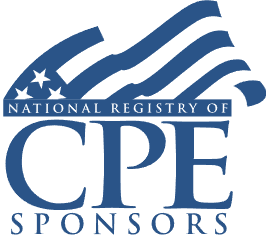Corporate Entity Conversions: Allocating E&P and Tax Attribute Carryovers in Reorganizations and Acquisitions

Course Details
- smart_display Format
On-Demand
- signal_cellular_alt Difficulty Level
Intermediate
- work Practice Area
Corporate Tax
- event Date
Tuesday, May 23, 2017
- schedule Time
1:00 PM E.T.
- timer Program Length
110 minutes
-
BARBRI is a NASBA CPE sponsor and this 110-minute webinar is accredited for 2.0 CPE credits.
-
BARBRI is an IRS-approved continuing education provider offering certified courses for Enrolled Agents (EA) and Tax Return Preparers (RTRP).
-
Live Online
On Demand
This course will provide corporate tax professionals and advisers with a practical guide to mastering the calculation of earnings and profits (E&P) and other tax attributes in the context of entity conversions, mergers and reorganizations. The panel will identify transactions and structures where E&P and attribute carry-forwards will have a material impact on the tax treatment of distributions and will discuss integrating acquired entity E&P tiers into the parent company’s calculations.
Description
For tax advisers to corporations undergoing consolidations, mergers or entity reorganizations, a significant and often unanticipated challenge is properly calculating, reconciling and allocating existing E&P and other tax attributes, including loss carry-forwards. The carry-forward of these tax attributes often impact the tax treatment of distributions to shareholders.
The rules governing allocation of accumulated E&P in a reorganization depend on the nature of the event or transaction. For companies making conversions of existing divisions in a reorg to simplify their entity structure, any accumulated E&P would “tier” into the parent structure.
In the case of an acquisition, however, the existing E&P of the acquired entity will remain with the acquired entity unless the parent corporation elects a “change in group structure” under the consolidation rules. The taxability of any distribution will be impacted by the allocation of the E&P after the conversion transaction or event.
Generally, most taxpayers don’t keep a running total of accumulated E&P and may not calculate it at all until it needs to determine whether a distribution qualifies as a dividend, tax-free return of basis, or gain from an asset sale or exchange. However, corporate tax advisers need to know the rules for allocating E&P in companies that have undergone reorganizations to avoid costly tax consequences arising from mischaracterized distributions.
Listen as our experienced panel provides a thorough and practical guide to calculating E&P for consolidated, merged or reorganized companies, and offers useful tax strategies for allocating distributions from E&P pools.
Outline
- Calculating E&P in an entity simplification transaction
- Carryovers and limitations of tax attributes in merger and reorganization transactions
- IRC 381 carryover rules
- Section 382 limitations
- Section 355 rules governing tax treatment to corporation and shareholders on distributions from consolidated entity
- Transactions where acquiree E&P tiers up to parent
- Change in group structure and impact on allocation of E&P between parent and subsidiary
- Case study and illustrations
Benefits
The panel will discuss these and other important questions:
- How Section 381 carryover rules impact E&P allocations between acquirer and target corporations
- Section 312 default rules for distributions from corporations involved in acquisition and separations
- Determining taxability of distributions from the E&P pool of an acquired entity vs. distributions from parent
- Workpaper methodology for calculating E&P and maintaining schedules
NASBA Details
Learning Objectives
After completing this course, you will be able to:
- Identify corporate reorganization transactions and events that require separate calculations of acquired entity’s E&P
- Recognize the tax treatment of distributions from E&P from acquired or reorganized corporations
- Determine how the tax attribute carryover and limitation rules of Sections 381 and 382 impact the tax treatment of distributions from the E&P pool of acquired entities
- Determine a strategy for allocating E&P among consolidated companies in a reorganization or merger transaction
- Field of Study: Taxes
- Level of Knowledge: Intermediate
- Advance Preparation: None
- Teaching Method: Seminar/Lecture
- Delivery Method: Group-Internet (via computer)
- Attendance Monitoring Method: Attendance is monitored electronically via a participant's PIN and through a series of attendance verification prompts displayed throughout the program
- Prerequisite: Three years+ business or public firm experience at mid-level within the organization, preparing complex tax forms and schedules, supervising other preparers/accountants. Specific knowledge and understanding of corporate merger transactions,characterization of distributions as dividends or gains, and calculation of earnings & profits; familiarity with tax attribute carry-forward rules of IRC sections 381 and 382.

Strafford Publications, Inc. is registered with the National Association of State Boards of Accountancy (NASBA) as a sponsor of continuing professional education on the National Registry of CPE Sponsors. State boards of Accountancy have final authority on the acceptance of individual courses for CPE Credits. Complaints regarding registered sponsons may be submitted to NASBA through its website: www.nasbaregistry.org.

Strafford is an IRS-approved continuing education provider offering certified courses for Enrolled Agents (EA) and Tax Return Preparers (RTRP).
Unlimited access to premium CLE courses:
- Annual access
- Available live and on-demand
- Best for attorneys and legal professionals
Unlimited access to premium CPE courses.:
- Annual access
- Available live and on-demand
- Best for CPAs and tax professionals
Unlimited access to premium CLE, CPE, Professional Skills and Practice-Ready courses.:
- Annual access
- Available live and on-demand
- Best for legal, accounting, and tax professionals
Unlimited access to Professional Skills and Practice-Ready courses:
- Annual access
- Available on-demand
- Best for new attorneys
